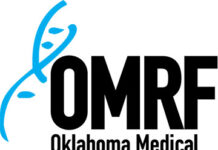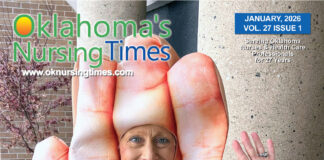Hip Dysplasia Awareness Month is observed globally every June, and INTEGRIS Health is dedicated to raising awareness about the signs, symptoms and treatment options for this often misunderstood orthopedic condition.
Understanding Hip Dysplasia
Hip dysplasia, also known as developmental dysplasia of the hip (DDH), occurs when an infant’s hip socket does not fully cover the ball portion of the upper thighbone. This misalignment can cause the hip joint to become dislocated or prone to dislocation. The International Hip Dysplasia Institute states that one in 10 infants are born with some level of hip instability, while one in 100 babies are treated for actual hip dysplasia.
Hip dysplasia can also manifest during adolescence or adulthood, particularly in milder cases that were undetected earlier, and is often called acetabular dysplasia because the socket (acetabulum) is shallow and does not fully support the femoral head. Adult hip dysplasia is nine times more common than infantile hip dysplasia and is the most common cause of hip arthritis before the age of 50.
Recognizing the Symptoms
“Early diagnosis and intervention are key to preventing long-term complications associated with hip dysplasia,” says Thomas Hsing M.D., an orthopedic surgeon with INTEGRIS Health Medical Group Orthopedics in Edmond and Enid. “We encourage parents and individuals to be vigilant about the signs and seek medical advice if concerns arise.”
Infants: Uneven leg lengths, limited range of motion in one leg or asymmetrical skin folds on the thighs or buttocks.
Children and teens: A noticeable limp, hip instability or discomfort during physical activities.
Adults: Persistent groin pain, a sensation of the hip “catching” or “popping” and reduced range of motion.
While the exact causes are unknown, a combination of genetic, environmental and mechanical factors likely play a role. Risk factors include being born female, a family history of the condition, breech birth position and firstborn status.
Treatment and Recovery
Treatment strategies depend on the patient’s age and the severity of the condition.
Infants: Use of a Pavlik harness to hold the hips in the correct position, promoting proper joint development.
Older children and adults: Physical therapy to strengthen the surrounding muscles, pain management through medications and surgical interventions such as periacetabular osteotomy (PAO) to realign the hip socket.
Recovery times vary depending on the treatment or surgery, and the patient’s age.
Infants who undergo open or closed reduction surgery must wear a body cast (also called a spike cast) around their lower torso and extremities for 12 to 18 weeks.
Older teenagers who undergo PAO do not need a cast and will be walking within a few days, but they will require crutches for several months to make sure they don’t put too much weight on their hips and legs. Physical therapy will also be prescribed to improve strength, flexibility and range of motion. For adults, returning to normal activities or sports can take six to 12 months depending on the procedure and commitment to rehabilitation.
“Hip dysplasia is often misunderstood as a childhood-only condition, but it can cause significant problems later in life if not addressed,” says Hsing. “Our goal is to ensure patients receive an accurate diagnosis and personalized care at any age to preserve joint health and prevent future complications.”
At INTEGRIS Health Orthopedics, our fellowship-trained orthopedic surgeons and specialists across the state provide expert care, compassionate support and will work with you to create a personalized treatment plan tailored to your needs.
INTEGRIS Health, the largest Oklahoma-owned not-for-profit health system in the state, is known for innovation and unparalleled quality offering advanced treatment options and specialties found nowhere else in the region.
Brooke Cayot, Director of Communications and Media, 405-644-6397














